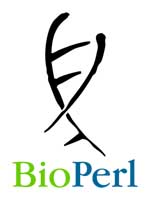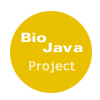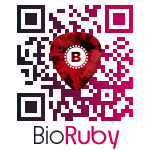Google Summer of Code 2015 Ideas
The details of each of our project ideas are listed below, including potential mentors. Interested mentors and students should subscribe to the OBF/GSoC mailing list and announce their interest.
See the main OBF Google Summer of Code page for more information about the GSoC program and additional ways to get in touch with us.
Cross-project ideas
OBF is an umbrella organization which represents many different programming languages used in bioinformatics. In addition to working with each of the “Bio*” projects (listed below), this year we are also accepting a category of “cross-project” ideas that cover multiple programming languages or projects. These collaborative ideas are broadly defined and can be thought of as “unfinished” — interested students should adapt the ideas to their own strengths and goals, and are responsible for the quality of the final proposed idea in their application.
Feel free to propose your own entirely new idea. You can also draw ideas from Genome Informatics (GMOD) and the National Evolutionary Synthesis Center (NESCent).
Nextflow graphical front-end
Rationale
Nextflow is a data-driven toolkit for computational pipelines that
simplify writing parallel and scalable pipelines in a portable manner.
Its goal is to make data analysis required by next generation sequence
technologies and, in more general terms, bioinformatics applications
easier for researchers. You can read more about Nextflow at this link
(http://www.nextflow.io).
It follows the UNIX philosophy where many small tools can be composed together to create efficient computational solutions where individual parts can be easily replaced. It has been designed to allow developers to fast prototype applications reusing their existing tools and scripts. For this reason it has been developed primarily as a command line oriented tool. However, complex pipelines may benefit from having a visualisation layer that helps the developer design and represent the application workflow logic.
NoFlo-UI is the presentation layer for NoFlo, a flow-based programming (FBP) environment that makes software creation more accessible and collaborative. It provides an interactive interface which allows you to create a computational workflow by dragging, dropping and connecting the different task components. It basically allows you to “draw” an application in such a way that it resembles a subway map. This “map” can then be more easily understood, shared and curated by other developers, compared to managing endless files of source code.
Approach
The goal, therefore, of the this proposal is to implement a graphical
front-end, based on the NoFlo-UI project, for the Nextflow programming
environment. This would provide the latter with a presentation layer
that would allow scientists to “sketch” their computational pipelines
instead of programming them, making it easier to share and handle
complex task interactions in their application logic.
Ideally this integration will implement a two-way tool in such a way that changes, applied in the visual editor, are reflected in the Nextflow scripting language and vice-versa.
Languages and skills
The student is required to have proven working ability with Javascript,
HTML5, Polymer and Node.js for the front-end development and good level
of knowledge of the Groovy/Java programming languages for Nextflow side.
He/she may also benefit by having some theoretical and practical knowledge of programming language syntax and grammar parsers.
Code
Nextflow source code is available at the following repository
(https://github.com/nextflow-io/nextflow/)
NoFlo-UI source code is available at this link (https://github.com/noflo/noflo-ui/)
Mentors
Paolo Di Tommaso
Nextflow low latency scheduling and in-memory data processing
Rationale
Nextflow is a data-driven toolkit for computational pipelines that
simplify writing parallel and scalable pipelines in a portable manner
across different execution platforms. Its goal is to make data analysis
required by next generation sequence technologies and, in more general
terms, bioinformatics applications easier for researchers. You can read
more about Nextflow at this link (http://www.nextflow.io).
Nextflow does not implement a task scheduling strategy on its own but delegates it to the underlying processing infrastructure, which in most cases is a grid engine like technology (SGE, PBS, SLURM, etc). However, these platforms were designed for job processing in a batch scheduling fashion, i.e. a few long duration jobs scheduled sequentially to the computer-cluster facility. This model suffers from very high latencies which make it unfit for highly parallel and short-lived jobs that are more and more common in bioinformatics data analysis.
The goal of this proposal is to integrate the Sparrow scheduler and Tachyon in-memory file system with Nextflow to overcome the limitations of batch-like schedulers generally available in most common cluster computation facilities.
The first is a high throughput, low latency distributed cluster scheduler, while the second is a memory centric distributed file system. Both of them are open source research projects developed at UC Berkeley.
The integration of these technologies would allow Nextflow to manage large distributed workloads in a more efficient and timely manner and to decrease the task granularity in Nextflow pipelines. Thus gaining an higher parallelism degree and better applications performance.
Approach
Nextflow implements an extensible mechanism that allows it to support
several computing platforms and file systems in a portable manner.
The approach suggested consists in implementing a new Nextflow executor which integrates the Sparrow scheduler and its features.
The support for Tachyon file system can be added to Nextflow by writing an adapter layer that follows the Java JSR-203 specification.
Languages and skills
Student is required to have proven working ability with the Java and/or
Groovy programming languages and a good level of theoretical and
practical knowledge in parallel and concurrent programming.
Code
Nextflow source code repository
(https://github.com/nextflow-io/nextflow)
Sparrow cluster source code (https://github.com/radlab/sparrow)
Tachyon file system source code (https://github.com/amplab/tachyon)
Mentors
Paolo Di Tommaso
Create GNU Guix Bioinformatics packaging system and add support to CloudBiolinux
Rationale
GNU Guix is a next generation
software packaging system that has many interesting
features for bioinformatics including multi-version support, transactional installs and reproducible systems.
GNU GUix is written in the Scheme/LISP programming language and works well with
virtual machines and Docker, for example.
Currently CloudBiolinux depends on linuxbrew/homebrew for creating special packages.
We propose to replace part of the linuxbrew infrastructure with that of GNU Guix.
Having the GNU Guix bionformatics package will allow us to run exactly
the same software on workstations, servers and virtual machines.
Approach
Write in Scheme a new collection of bioinformatics packages for GNU Guix
as part of the GNU
project, perhaps adding further support for Ruby and Python interpreters in the process
(Python is rather well supported already). Embed GNU Guix inside CloudBiolinux by
using ‘flavors’. Also
write a testing infrastructure in Python. Next introduce GNU Guix to Galaxy as part
of the Galaxy toolshed.
Languages and skills
Interest in reproducible software deployment for bioinformatics. Willing
to learn Scheme, some command of Python.
Code
GNU Guix presentation at codefest 2014:
http://www.gnu.org/software/guix/guix-openbio-codefest-20140709.pdf
GNU Guix source: http://www.gnu.org/software/guix/
CloudBiolinux and Galaxy source and info: http://cloudbiolinux.org/
Mailing list
We will use the CloudBiolinux mailing
list
Mentors
Pjotr Prins, Marco van Zwetselaar, Brad Chapman, Dave Thompson
BioPerl

- Mailing lists
- IRC:
#bioperlon Freenode - Information for new developers
- Source code browser for bioperl-live (the main BioPerl code base), and all BioPerl sub-projects
- Priority list of things that need work, as another source for student-conceived project ideas
NGS-friendly BioPerl code
Rationale : BioPerl is known to be slow re: any data sets, but particularly when dealing with very large data (e.g. anything related to NGS analysis. Can we make it better? Where should we focus our efforts?
Approach : Under the supervision of their mentor(s), the GSoC student will:
:* Benchmark bottlenecks that lead to loss in performance for NGS analyses
:* Refactor old classes or develop new optimized code for NGS analysis
Challenges : This can be a self-contained project, but will require a lot of discussion on what areas to focus on. Some knowledge of C-based code may be required in cases where low-level library bindings could be generated.
Difficulty and needed skills : easy to hard, depending on student’s familiarity with the tools to be used. Student will need:
:* excellent Perl programming skills, including familiarity with NGS datasets
* knowledge of modern Perl practices.
Mentors : Chris Fields, Mark Jensen
BioPerl 2.0 / BioPerl6
Rationale : Design or reimplement BioPerl classes without API constraint, using Modern Perl tools or Perl 6.
Approach 1: A viable Perl6 implementation, Rakudo, is available, with a beta ready to be announced by Sept. and a full Perl6 release by this December 2015. This gives us an enormous opportunity to redesign fundamental aspects of BioPerl without the necessity for development hindered by a requirement for backwards compatibility.
Approach 2 : Most BioPerl code is over 6 years old and doesn’t take advantage of Modern Perl tools, such as new methods in later versions of perl, /MooseX, , and more. Set up the basic core classes that allow mingling of Modern Perl with older BioPerl classes; propose and benchmark variations of specific core classes utilizing Modern Perl tools.
Code: Two projects, Biome (Moose-based BioPerl) and BioPerl6 (Perl 6 BioPerl) have already started but are best described as proof of concept.
- Biome: http://github.com/cjfields/biome
- BioPerl6: http://github.com/cjfields/bioperl6
- IO implementations for object iteration, or Perl6 grammars for common formats
- Redesign of common BioPerl classes
- etc.
This is an area ripe for new student project ideas. The more focused the better! Discussion is a must, either via IRC or email.
Difficulty : Project-dependent
Mentors : Chris Fields, Mark Jensen
Convert BioPerl-DB to DBIx::Class
Rationale : Bioperl-db (the BioPerl bindings to BioSQL) in essence constitute a self-made ORM, invented at a time when DBIx::Class didn’t exist yet. As such, it has some advantages (if you are willing to count overly clever features to be counted in this category), but arguably many more disadvantages, chief among them being the unsustainably small (you could also say non-existent) developer community supporting it, and the fact that DBIx::Class now has existed for years, and is fairly mature. So, rewriting Bioperl-db with a DBIx::Class (or another well-supported generic ORM) would stand to make a considerable impact on our ability to further develop Bioperl’s relational storage capabilities, as well as BioSQL itself.
Approach : Under the supervision of their mentor(s), the GSoC student will:
:* Start working on conversion of BioPerl-DB classes to using DBIx::Class
:* write additional tests and improve documentation as needed
Challenges : BioPerl-DB is self-contained; this may require looking at the BioSQL schema and determining whether there are specific areas that need the most focus.
Difficulty and needed skills : easy to hard, depending on student’s familiarity with the tools to be used. Student will need:
:* excellent Perl programming skills, including familiarity with:
:** DBIx::Class
Mentors : Hilmar Lapp, others?
BioJava

- BioJava developer mailing list
- BioJava modules as another source for student-conceived project ideas
- Source code for 1
Analysis methods for protein dynamics
Rationale
Protein structures are dynamic entities, and understanding how proteins
move can be critical to understanding their function. BioJava has strong
support for representing static protein structures, but little support
for representing flexability and freedom of movement. Such methods would
enable users to better analyze enzymes, kinases, and other biological
molecules which are relevent to molecular biology and medicine.
Approach
Initial efforts will focus on methods for analysis of molecular dynamics
simulation data. These methods include conventional MD analysis
calculations such as mean square fluctuations of
atoms,
cross-correlation,
autocorrelation and time
lapse correlations. The project will include both implementations of the
algorithms and the development of tools for visualizing analysis data.
Languages and skill
Candidate should be comfortable with Java. Familiarity with
bioinformatics and molecular dynamics would also be beneficial, although
this background information could be learned by a motivated student.
Code
BioJava source code is available at
2 (LGPL)
Visualization will use the Jmol molecular viewer (LGPL)
Mentors
???
BioRuby

- Developers mailing list
- Source code
- IRC:
#biorubyon Freenode
Add local realignment support to Sambamba
Rationale
Sambamba is a multi-core alignment processor for next generation
sequencing
(BAM/SAM/CRAM formats). It mostly replaces the samtools software apart from
the mpileup routine. To achieve that the local realignment routine of
samtools needs to be implemented in the D programming language, preferably removing the bugs and
taking ideas from the freebayes local realignment implementation.
Approach
Implement a local realignment routine in D. Add mpileup support to
sambamaba.
Update the bioruby-samtools package to support sambamba.
Languages and skill
Able to read C code and willing to write high-performance software in D
(and some Ruby).
Basic understanding of probability theory
Code
Sambamba: https://github.com/lomereiter/sambamba
D language: http://dlang.org/
Bioruby-samtools gem: http://biogems.info/
Notes on Samtools algorithms: https://www.broadinstitute.org/gatk/media/docs/Samtools.pdf
Samtools indel caller code: https://github.com/samtools/samtools/blob/develop/bam2bcf_indel.c
Samtools local realignment: https://github.com/samtools/samtools/blob/develop/kprobaln.c
Mentors
Pjotr Prins, Artem Tarasov, Francesco Strozzi
BLAST visualisation library for BioRuby and SequenceServer
Rationale
It is now trivial to generate large amounts of DNA sequence data; the challenge is making sense of such data. In many cases, researchers can gain much from simple answers regarding small sets of previously identified study sequences – for example determining whether the sequences are present in a new dataset, or identifying the genetic variation present in such sequences. BLAST is the most commonly used tool for such analyses (>100,000 citations; twice among the top 15 cited papers of all time). However it remains surprisingly challenging to visualize BLAST results.
Approach
- The student will study existing BLAST visualization approaches
including as part of:
- NCBI’s website
- SequenceServer
- dot-plot
- Kablammo http://kablammo.wasmuthlab.org
- Circos-type visualization https://twitter.com/pjacock/statuses/484439588434636800
- Genevalidator (a former GSoC project) http://genevalidator.sbcs.qmul.ac.uk
- and potentially others - BLAST overviews should be considered independently of visualization concerning individual hits.
- Decide on architecture for implementing these (or a subset) on Sequenceserver
- Integrate visualization as part of sequenceserver - in a manner that further improves Sequenceserver’s user experience.
- Release the libraries in a modular and documented manner for reuse by others.
- This will require use of at least the following technologies: Ruby, Javascript, HTML, CSS.
Languages and skill
Ruby, JavaScript
Code
https://github.com/yannickwurm/sequenceserver https://github.com/jwintersinger/kablammo
Mentors
Yannick Wurm, Anurag Priyam
BioHaskell
:* Bioinformatics section on HackageDB
:* GSoC page
Biohaskell has its own gsoc page. We currently have 2 (+1) open problems listed there. In addition, we accept peoples’ own ideas and have a number of open problems not listed. The latter fall somewhere between bachelors thesis and PhD work and are harder to nicely package up.
Fast k-mer indexing
Rationale
Fast k-mer indexing requires a data structure mapping a short string of
k characters to a value. While trivial to do with almost all key-value
maps, we also require a very memory-efficient storage system. Knowledge
of suffix structures is a definite plus.
Approach
Determine feasibility of implementation in pure Haskell vs. binding to
new or existing C code. Multi-threadedness will pose a problem. There is
currently no efficient suffix tree implementation available in Haskell
(lazy suffix trees do exist but are efficient only under certain
conditions).
Languages and skill
Haskell, maybe C (low-level code). Skill: need to have worked with
suffix structures before GSoC starts. If in coded in C, then enough
Haskell knowledge to be able to create thread-safe bindings. Otherwise,
medium to advanced Haskell knowledge.
Code
containers and
unordered
containers for
references to map-like container structures.
Mentors
Ketil Malde
Low-level bit and stream-fusion optimizations
Rationale
In Haskell, we typically don’t talk that much about low-level
implementation details. For some algorithms, low-level details
(especially bitwise operations and SIMD instructions) become important.
I have a library dealing with bitsets but it is not yet fully efficient.
Getting SIMD instructions to play nice with /generic/ dynamic
programming recursion schemes is probably really hard.
Approach
Write benchmarking code for the different bit-manipulating functions.
Optimize the code to be as loopless as possible. Allow for
architecture-dependend code rewrites. The SIMD question is rather
open-ended and could very well be a Haskell.org task.
Languages and skill
Haskell and C. Bitset operations require knowledge of specialized C
routines. Including IFDef-ing for different architectures. Code should
be as non-branching / non-recursive as possible. SIMD instructions have
been added to vector library. The problem we face is that vector-SIMD
code expects data to be ordered linearly. Dynamic programming code leads
to unordered access structures. The student should know about the Core
language (one of the intermediate languages between Haskell and the
final binary).
Code
vector for streaming code.
bits for some bitwise
operations. An Ordered-Bits library will be pushed to hackage next week
with reference code. Dynamic programming code requires primitive
arrays and
ADPfusion.
Mentors
Christian Hoener zu Siederdissen
Team YummyData
YummyData is a system of collecting and disseminating various statistical and functional data of SARQL endpoints in the Life Science domain.
Sharing SPARQL endpoint data
Rationale
Although increasing amounts of biomedical data is being provided as
Linked Data, there is currently no standardized way to monitor SPARQL
endpoints for their availability, reliability, or content flux.
Importantly, there are additional issues relating to the provision of version-sensitive data republished by third parties or made available as part of research projects.
All of these aspects have important consequences for users that rely on federated queries across distributed SPARQL endpoints.
Approach
YummyData system consists of mainly two components: that of collecting
data for each endpoint and that of providing obtained data.
Those data to be collected are based on variety of factors including availability, reliability, content summarization, and content evolution.
Our long term goal is to compute a SPARKLE score, a composite metric combining measures such as the number of triples, size and frequency of updates, the number of links to other datasets, and the capabilities of the endpoint server.
Languages and skill
YummyData system is written Java and Scala. In addition, SPARQL is used
to collect data, and JavaScript is used for showing results.
Code
GitHub
Mentors
Andrea Splendiani, Thierry Lombardot, Yasunori Yamamoto